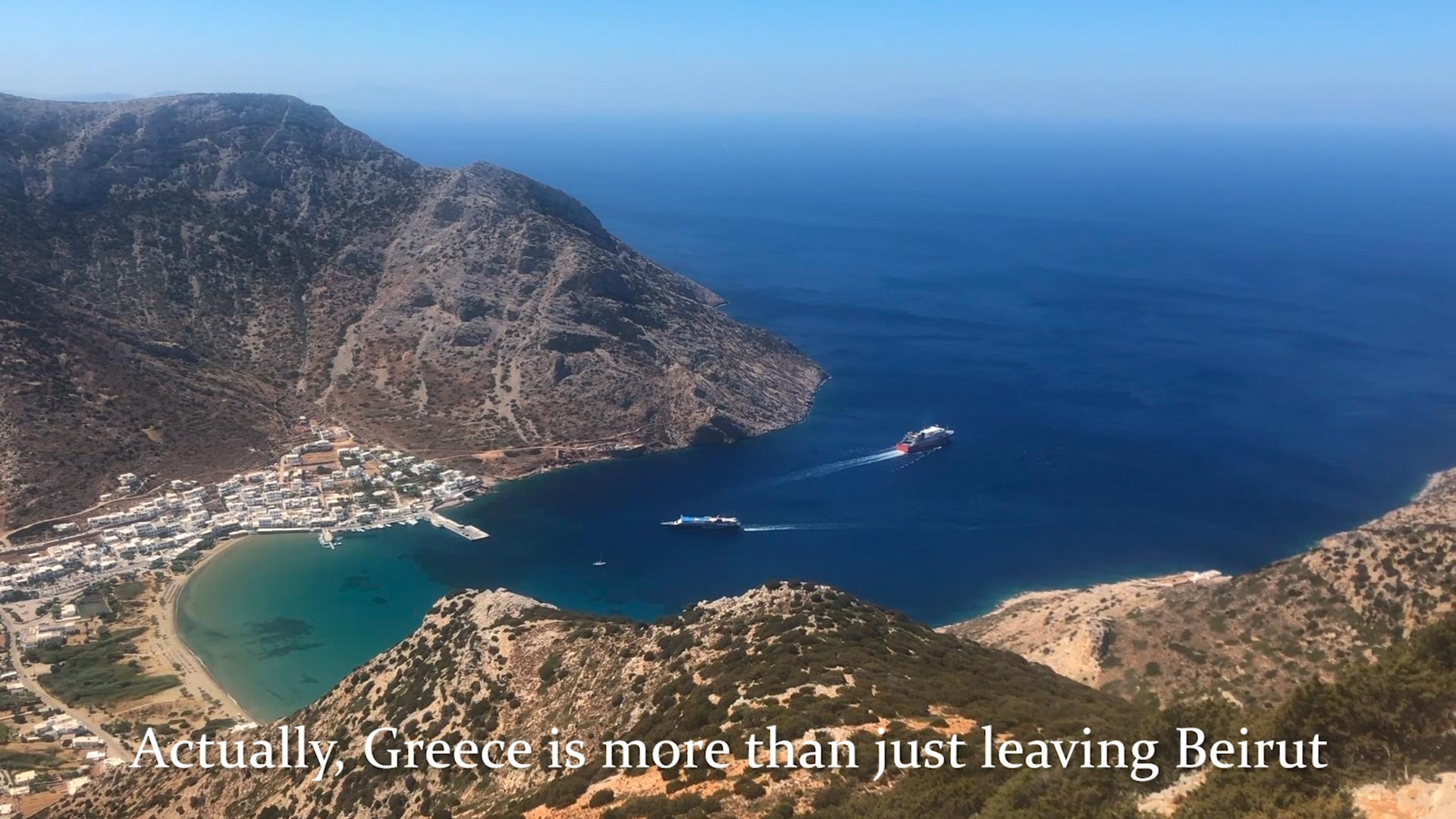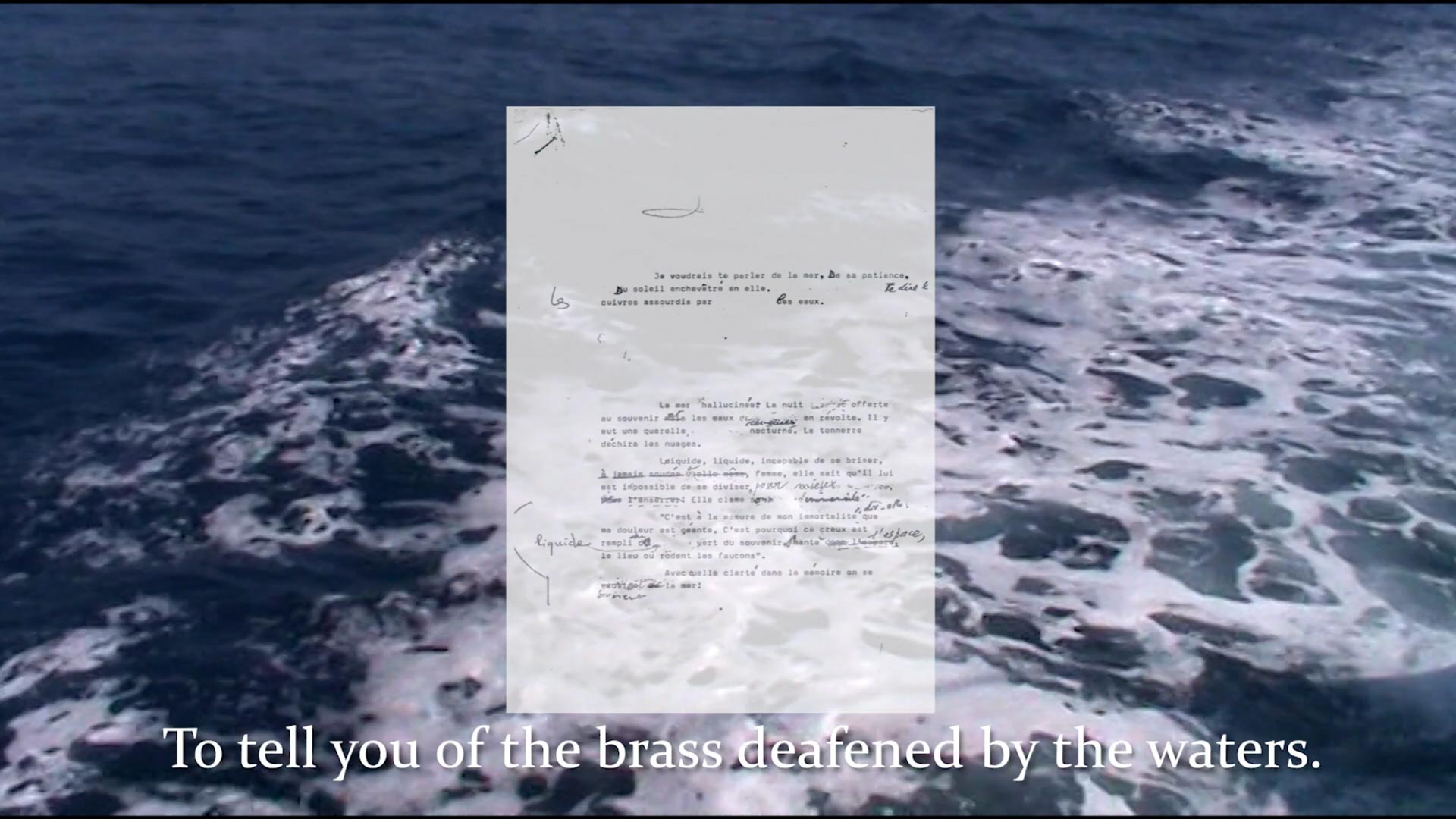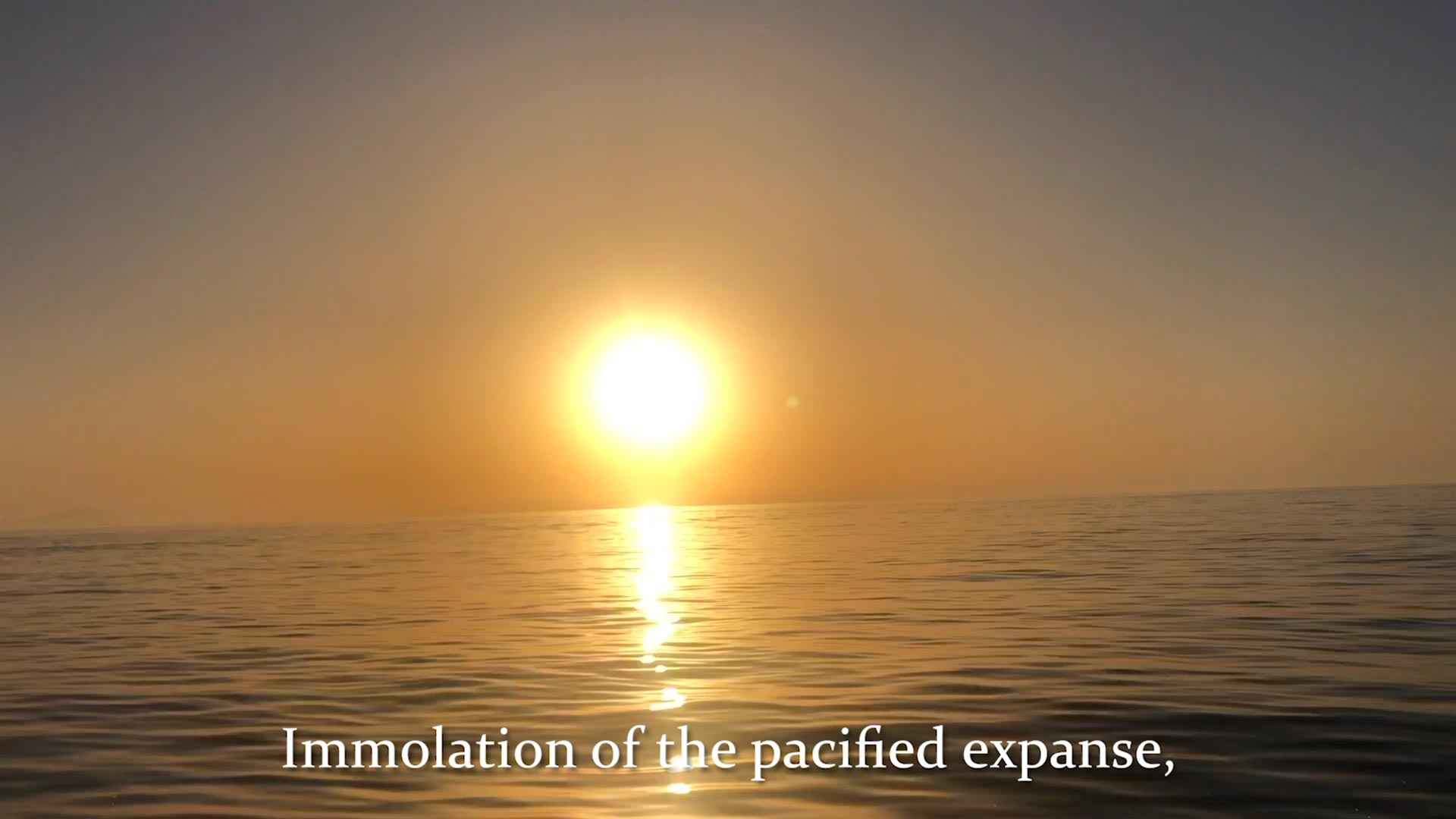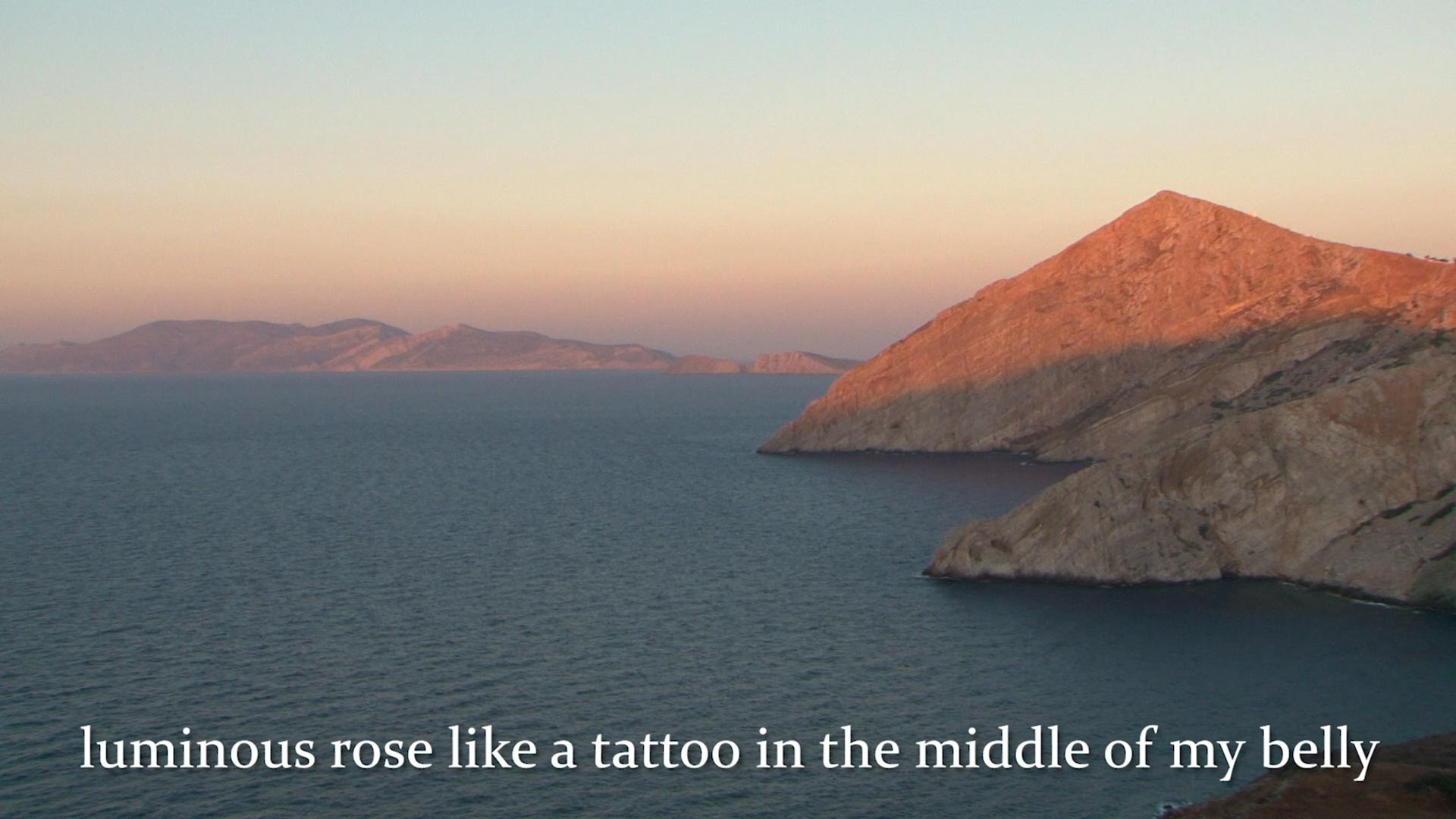Green, how I want you green.
Green wind. Green branches.
The ship out on the sea
and the horse on the mountain.
–Federico García Lorca
This series of films departs from a conversation on landscape in the poetry of Federico Garcia Lorca and Mahmoud Darwish. It posits landscape as a place of connection as well as a reflection on memory, distance, and exile. The figure of the olive tree connects a wide Mediterranean region through millennia of parallel agricultural ritual and ecological coexistence. The olive branch is known as a symbol of peace while residing in a region that has been cut apart and divided.
Trees are a living archive of the land. Olive trees can live up to thousands of years, making them a stable and familiar element for generations of their neighbours. The olive branch is a symbol of peace whose stable grip has been wrested from the soil. They are also targets in the ongoing catastrophe in Palestine that is impossible not to speak of.
***
“The Mediterranean is wilder than we think, it’s geological, it’s planetary.” – Etel Adnan
The allure of Mediterranean serenity is entangled with its shipwrecked depths on a seafloor piled with centuries of human struggle. While Lamia Joreige’s film Sun & Sea pays tribute to the work of the great Lebanese poet Etel Adnan, it also begs the question of how we can admire the great beauty of the world when surrounded by the strife of Syria, Lebanon, and Palestine.
Etel Adnan’s eponymous poem was written in French in 1949. She invited Joreige to illustrate her words with images from the Greek Mediterranean years later. In the film’s introduction she affirms that travelling to Greece is more than just leaving Beirut, she opens a dialogue of relation between lands and waters moored in their geophysical difference. Joreige’s visuals accompany Adnan’s poetic verses with aesthetic memories of the Mediterranean shared across the sea’s tricontinental life. Cliffs plunge into sun-drenched shores and a scene filmed outwards from the interior of a sea-cave dives into collective associations and the endless layers of history that coexist with Adnan’s flowing verse. Her description of the water as a living body resonates with Lorca and Darwish’s fascination with the unique identities formed by inhabiting the land.
“My pain is as huge as my immortality.
Hence this hollow,
Filled with the green fluid of memory.”
Lamia Joreige is a visual artist and filmmaker who lives and works in Beirut. Her works have been presented internationally in various exhibitions and venues, among which: MAXXI, Fondazione Sandretto Re Rebaudengo, Venice Biennale (Lebanese pavilion 2007); Centre Pompidou, Musée Nicéphore Niépce in France; Harvard University’s Radcliffe Institute, the International Center of Photography, the New Museum, the San Francisco Museum of Modern Art; Istanbul Biennial, Arter; Liverpool Biennial, Tate Modern, Serpentine Gallery and Cardiff National Museum in the U.K.; Sharjah Biennial in the UAE, Mathaf in Qatar and Marfa gallery in Lebanon. She has written, directed and produced various short essay films and one feature, which were presented in festivals and venues among which: Medfilm Festival, Rome (Awarded Best film); FID Marseille (competition); Les Rencontres Internationales Paris/Berlin; Paris Cinema; The Mediterranean Festival of Cinema, Montpellier; Home Works I, IV & VII (Ashkal Alwan), Le Festival du Film Libanais de France and Beirut Cinema Days in Beirut. Lamia Joreige is the recipient of a fellowship at Columbia University Institute of Ideas and Imagination in Paris (2021). She was a fellow at the Radcliffe Institute for Advanced Study at Harvard University for the year 2016-2017. She is a co-founder and board member of Beirut Art Center, which she co-directed from 2009 to 2014.
Àngels Miralda (1990) is an independent writer and curator. Her recent exhibitions have taken place at Something Else III (Cairo Biennale); Garage Art Space (Nicosia); Radius CCA (Delft), P////AKT (Amsterdam), Tallinn Art Hall (Estonia), MGLC – International Centre for Graphic Arts (Ljubljana), De Appel (Amsterdam), Galerija Miroslav Kraljevic (Municipal Gallery of Zagreb), the Museum of Contemporary Art of Chile (Santiago), Museu de Angra do Heroísmo (Terceira – Azores), and the Latvian Centre for Contemporary Art (Riga). Miralda wrote for Artforum from 2019-2023 and regularly publishes with Terremoto (Mexico City), A*Desk (Barcelona), Arts of the Working Class (Berlin), and is editor-in-chief of Collecteurs (New York).
Lamia Joreige, Sun & Sea, (2021), HD Video, Color, Sound, 17:00 min
Lamia Joreige, Sun & Sea, (2021), HD Video, Color, Sound, 17:00 min
Lamia Joreige, Sun & Sea, (2021), HD Video, Color, Sound, 17:00 min
Lamia Joreige, Sun & Sea, (2021), HD Video, Color, Sound, 17:00 min





